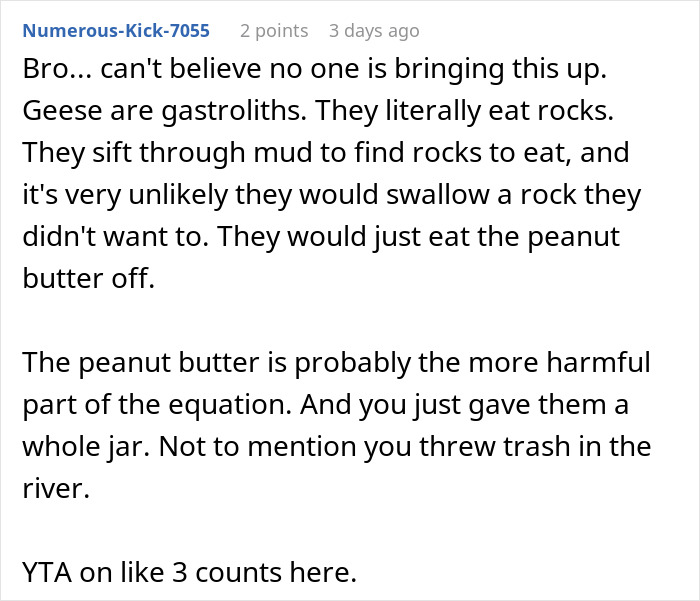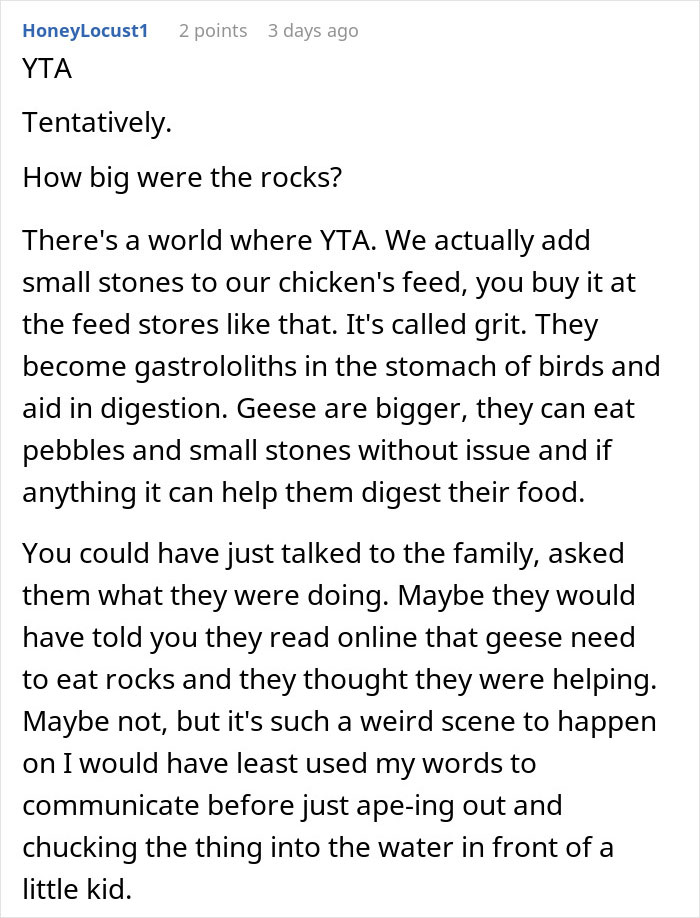Children need role models and guidance—positive examples help them make good choices. So when Reddit user Shasta017 spotted a little boy misbehaving, they decided to correct him.
The kid was tricking wild geese into eating rocks while his mother was cheering for him. Concerned for the animals’ safety, Shasta017 intervened and put an end to it, but the child and his mother had such an emotional reaction that after the encounter, the Redditor began to question whether they had overreacted and made a post on r/AITAH, asking its members to weigh in on the situation.
We start learning how to interact with wildlife at a very young age and can make a lot of mistakes along the way

Image credits: RDNE Stock project / Pexels (not the actual photo)
So when this person noticed a boy doing something they probably shouldn’t, they stepped in
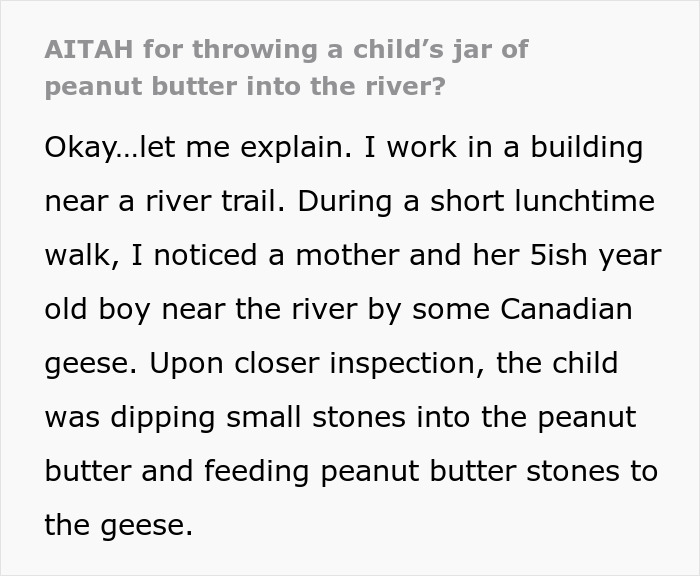
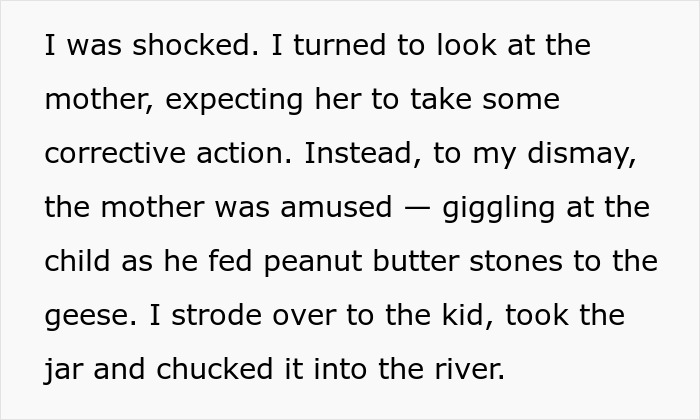

Image credits: Anna Shvets / Pexels (not the actual photo)
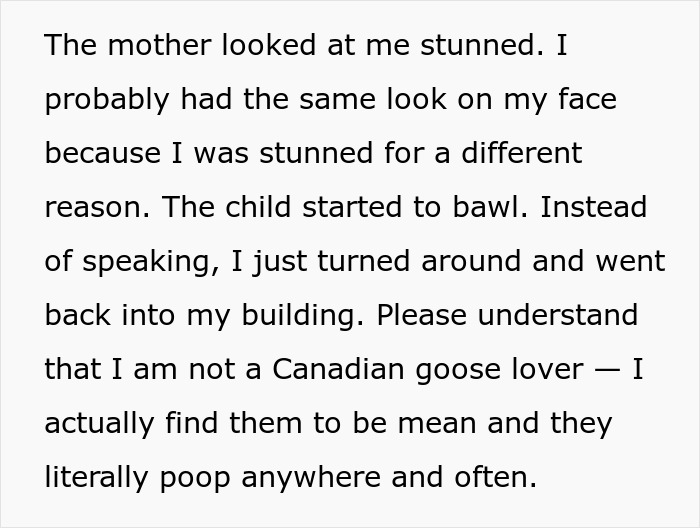

Image credits: shasta017

Image credits: Rüveyda / Pexels (not the actual photo)
Feeding birds raises ethical questions
Interestingly, it is not harmful for geese to swallow small rocks. On the contrary, it is a natural and necessary behavior for them. Geese, like many other birds, do it to aid in digestion. These stones collect in their digestive organs called gizzards, where they help grind down food since birds do not have teeth.
Interestingly, the issue in this particular scenario isn’t the rocks themselves but the peanut butter, which can be harmful to birds because it isn’t a part of their natural diet.
According to the U.S. Fish and Wildlife Service, feeding birds raises ethical questions and is widely considered a bad practice because teaching wild animals to associate humans with handouts can lead to serious problems.
Think “bad” bears at campsites and alligators stalking people. And the danger is not just to us. Supplemental feeding can cause digestive problems and alter normal behaviors.
When it comes to birds, the big three are disease, predation, and collision.
Drawing birds into close contact on shared surfaces makes it easy for them to spread bacteria like salmonella and E. coli, and luring them to the same place on a predictable schedule makes them more vulnerable to predators, like cats and hawks. Some birds may also accidentally smash into glass windows near feeding spots (though windows in tall buildings are greater collision hazards).
While throwing some crumbs might feel like a nice way to spend your time, bird numbers are down by almost one-third since 1970, so maybe it’s best not to add to these grim stats.
Later, the person behind the story clarified what kind of rocks were being used
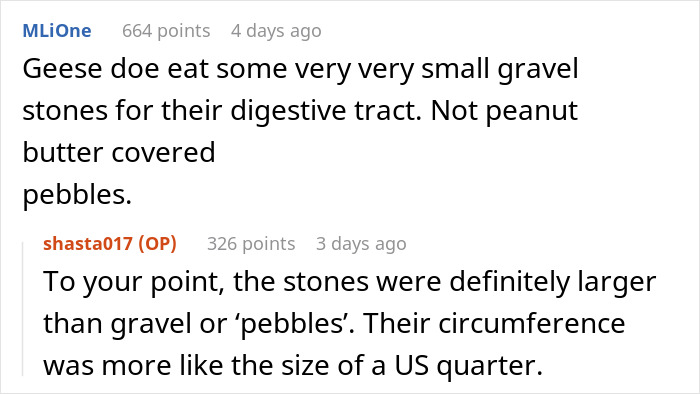
Most people said they did the right thing

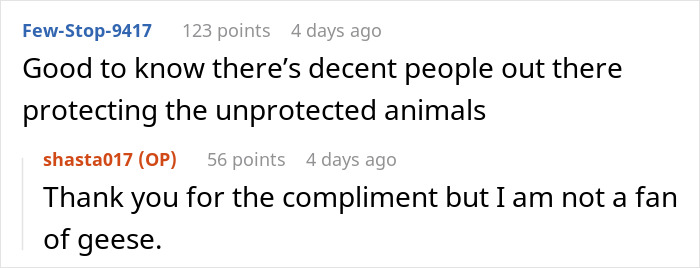
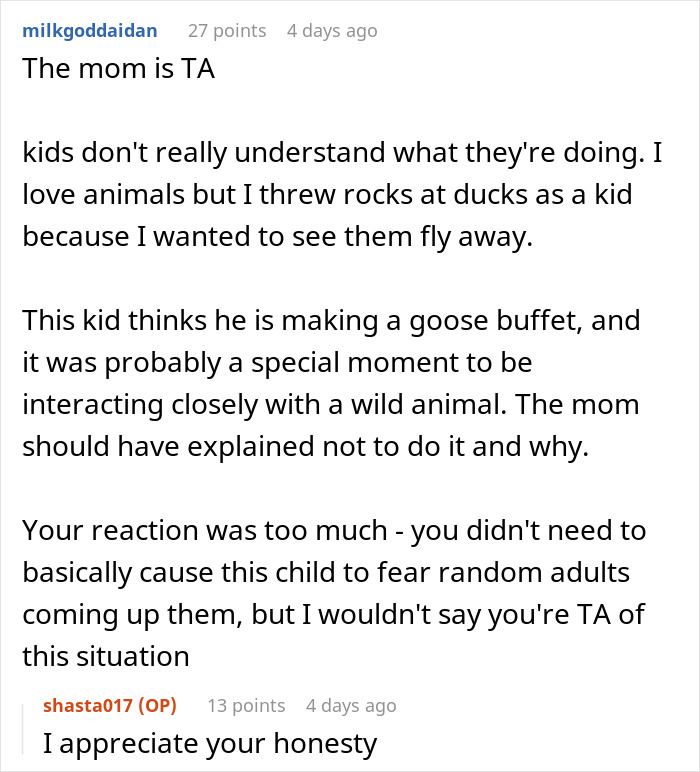



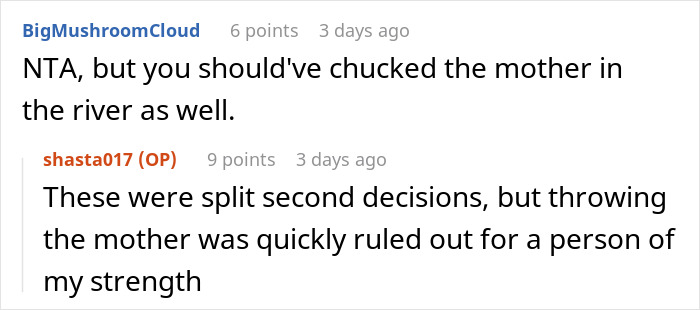



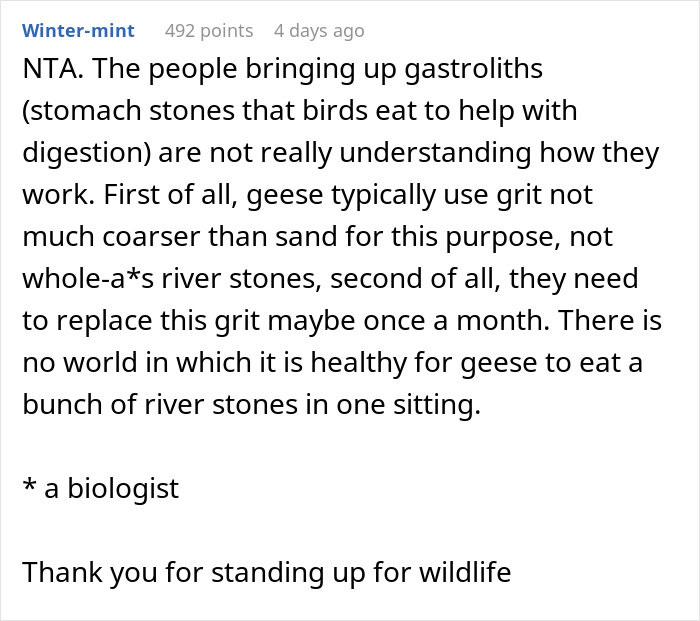



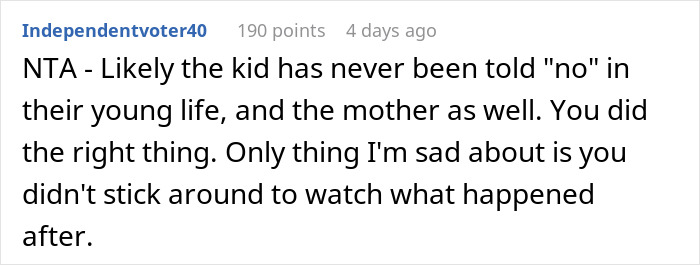

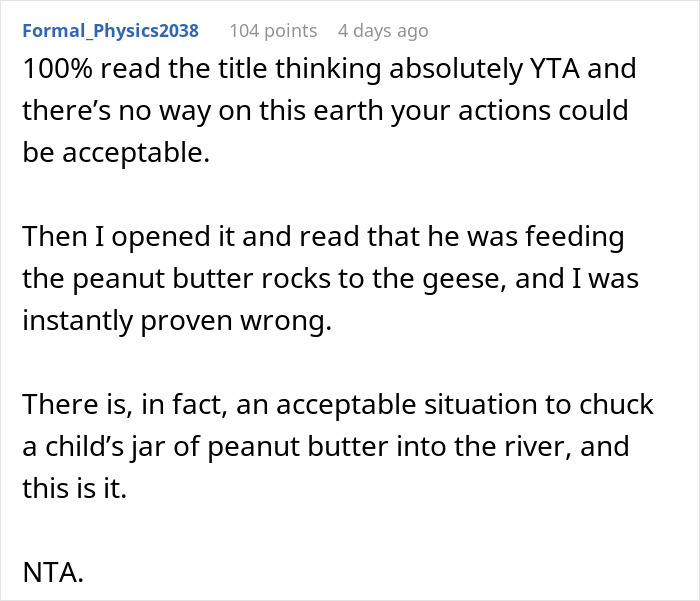
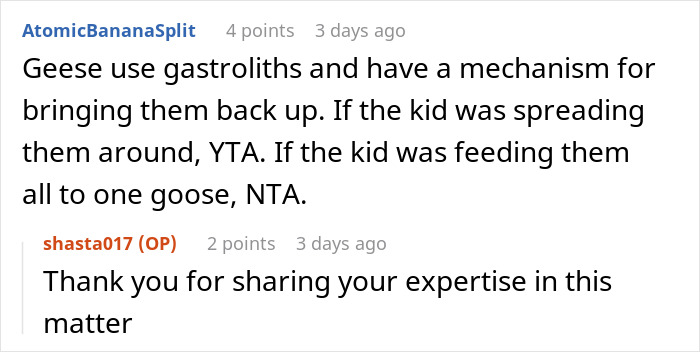
But some believe everyone could have handled the situation better
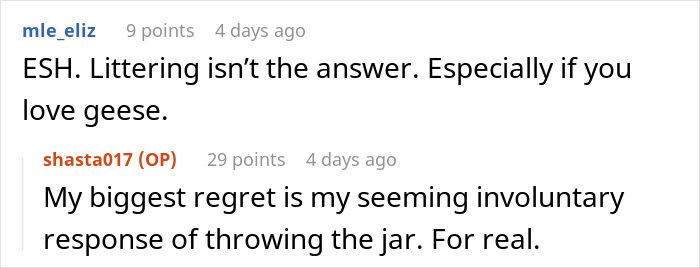
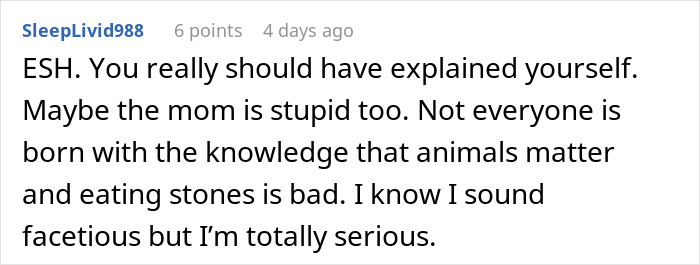
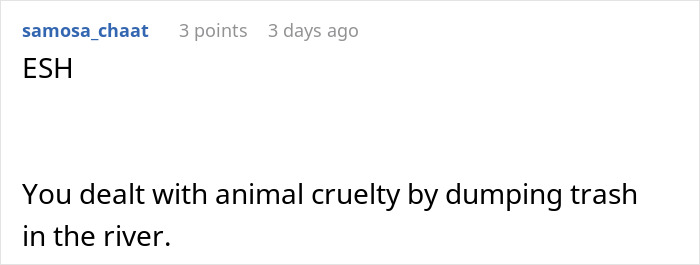

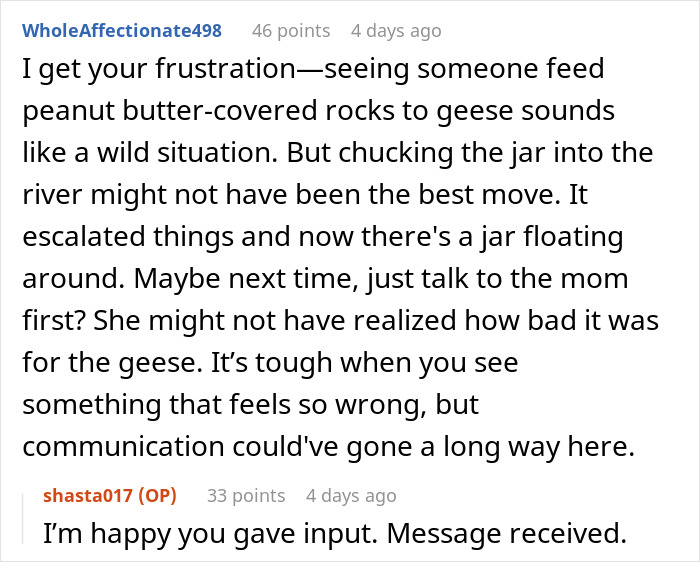
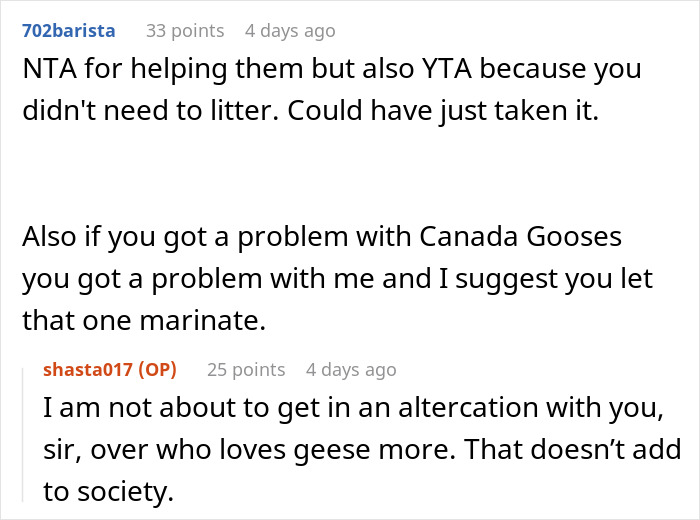
And some think the author of the post was in the wrong
